Ever since I read that Tito’s bunker in Konjic, Bosnia & Herzegovina has been opened to the public, I have had the ardent wish to visit this complex. The fact that this secret nuclear bunker, officially called Atomic War Command or ARK/D-0, was built to protect Yugoslav President Josip Broz Tito and his close associates in the event of an atomic conflict, was more than fascinating.
During our camper tour through Bosnia & Herzegovina, we passed by the charming town of Konjic, located around 60 km southwest of Sarajevo on both sides of the Neretva river. Its old stone bridge, Stara Ćuprija, was built in 1682 and is the best preserved Ottoman bridge in the country.
Following the signposts, we found ARK/D-0 not far from Konjic, in a mountainous, heavily wooded area along the Neretva river. After we passed through the gate of a military compound secured by soldiers of the Bosnian Army, we found free parking for the camper close to three ordinary houses, where a group of people was waiting. We had not booked in advance, but – how lucky we were! – the representative of the Konjic Tourist Office allowed us to join a group of foreigners with an English-speaking guide.
The construction of the bunker that started in 1953, and later its existence, were among the best guarded Yugoslav military secrets of those times. The construction workers were carefully selected and they had to sign a contract of silence. Moreover, all staff members held the highest security clearance.
Teams of workers often changed, so no one would know too much about the bunker. Workers were brought there blindfolded, so that they would not know its exact location. And once the bunker was ready, the 16 members of the Yugoslav People’s Army (JNA) in charge of maintaining the structure did not reveal the secret either. They were well-paid and had a lot of privileges, but they were not allowed to leave the country under any circumstances….
And so the bunker remained top secret for more than 50 years. It is even unknown if Tito has ever seen this bunker. Yes, we know that Tito has visited Konjic four times – allegedly because there was an important ammunition factory there. His last visit was in 1979, one year before he died. Well, probably he has also visited “his” nuclair bunker on that occasion, but there is no proof that he has ever been here…
The tour started from one of the houses that concealed the entrances to the bunker and served as residential quarters for technical personnel. Along a corridor in the first house, we passed through a 1.20 meter-thick metal door that protected a tunnel leading to the heart of the bunker, which is 280 meters deep and 202 meters long. The temperature in the bunker was between 21° and 23°C and the humidity 60-70%, representing near-optimal subterranean living conditions.
A layout showed the U-shaped complex made up of 12 blocks. The guide explained us that this enormous facility contains over 100 rooms, including dormitories, two large conference rooms, five operation centers, two kitchens, five large toilets and a cryptography center. And in the middle of all that, in Block 8, was Tito’s private residence.
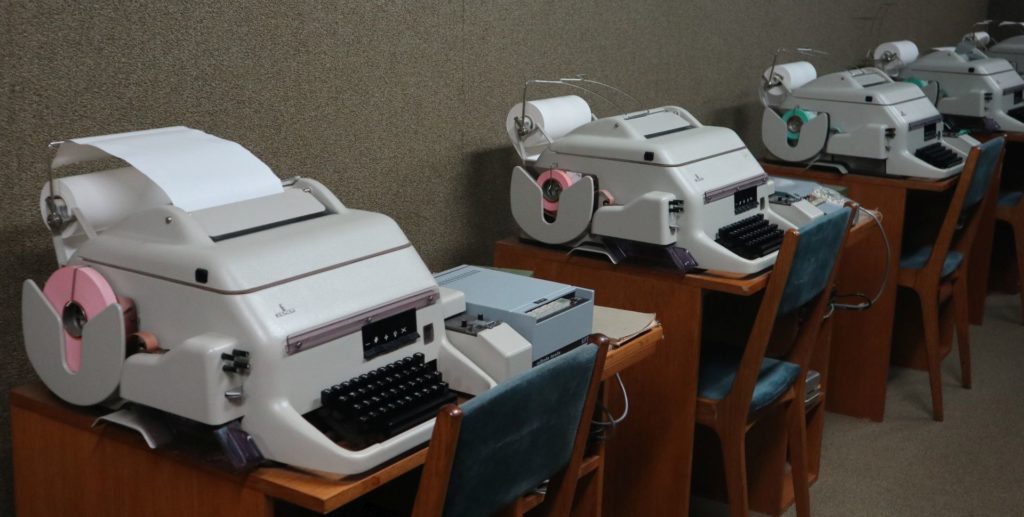 Just imagine what a huge complex it was: the 6500 square meter underground facility was designed to function as a military command center and a shelter for 350 people, who could be protected and accommodated here for up to six months. The construction costs amounted to 4.6 billion US Dollars (equal to 26 billion in today’s currency).
Just imagine what a huge complex it was: the 6500 square meter underground facility was designed to function as a military command center and a shelter for 350 people, who could be protected and accommodated here for up to six months. The construction costs amounted to 4.6 billion US Dollars (equal to 26 billion in today’s currency).
In March 1992, during the breakup of Yugoslavia, the Yugoslav Army ordered its demolition. Fortunately, the Bosnian members of the military detachment refused to carry out the order and surrendered the structure to the separatist Bosnian Government. The bunker with all of its furniture and equipment remained intact. It was impressive to see the communication desk where this order was registered on tape (last photo) …
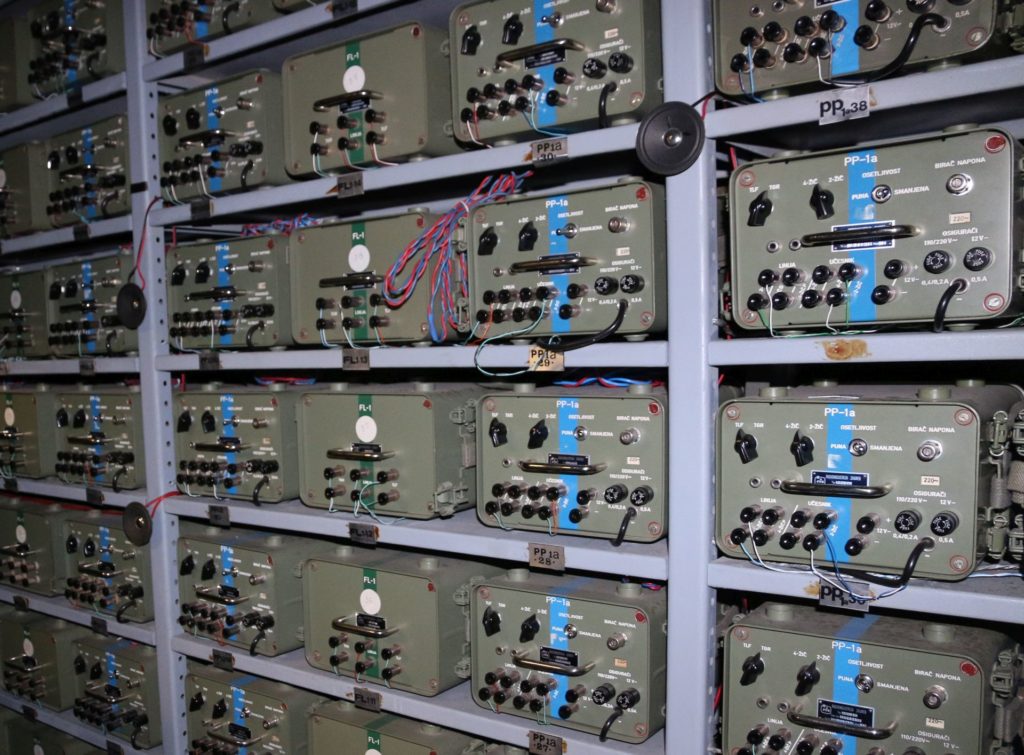 The tour lasted more than an hour. We were allowed to visit the telephone exchange center, the air-conditioning system, the water tank … We could touch the brand new telex printers with yellowish paper from the seventies. We saw devices and communication systems that nobody at the time even knew they existed. And we also saw the old-fashioned red telephones, which were used for direct contact with the Supreme Command.
The tour lasted more than an hour. We were allowed to visit the telephone exchange center, the air-conditioning system, the water tank … We could touch the brand new telex printers with yellowish paper from the seventies. We saw devices and communication systems that nobody at the time even knew they existed. And we also saw the old-fashioned red telephones, which were used for direct contact with the Supreme Command.
The bunker could withstand a nuclear attack of 25 kilotons of TNT, much more than the bombs detonated over the Japanese cities of Hiroshima and Nagasaki in 1945.
And was there a way out in case of need? Yes, the bunker had eight alternative exits, which lead to the top of the mountain. These exits could not be found on any map!
All together, it was an incredible experience to enter this nuclear shelter that was meant to be used in times of the Cold War. It was like entering into the past of Yugoslavia.
In 2011, ARK hosted the first edition of the Biennial of Contemporary Art, which brought together 44 artists from 18 different countries and attracted more than 15,000 visitors. The same event was held in 2013 and 2015. Over fifty works of art have remained on-site as permanent exhibits, connected with the terrible war that caused the fall of Yugoslavia in the 1990s.
I was particularly touched by one work of art: the photo of a JNA soldier, emotionally torn apart because his parents belonged to different nationalities…
Conclusion
We left the underground facilities and got back into the beautiful nature of Bosnia and Herzegovina, deeply impressed by this enormous construction work – the largest nuclear shelter and one of the largest underground facilities ever built in the former Yugoslavia. ARK/D-0 is, no doubt, one of the best preserved examples of the social, ideological and military system of Socialist Yugoslavia.
Detailed information:
Entrance fee € 10.50 per person
Opening hours Monday, Wednesday and Friday: 10h, 12h and 14h; Saturday and Sunday: 10h and 12h
Group reservations Tuesdays and Thursdays
Duration of guided tour 90 minutes
Booking www.titosbunker.ba or www.visitkonjic.com
GPS coordinates N43°38’03” E17°59’42”

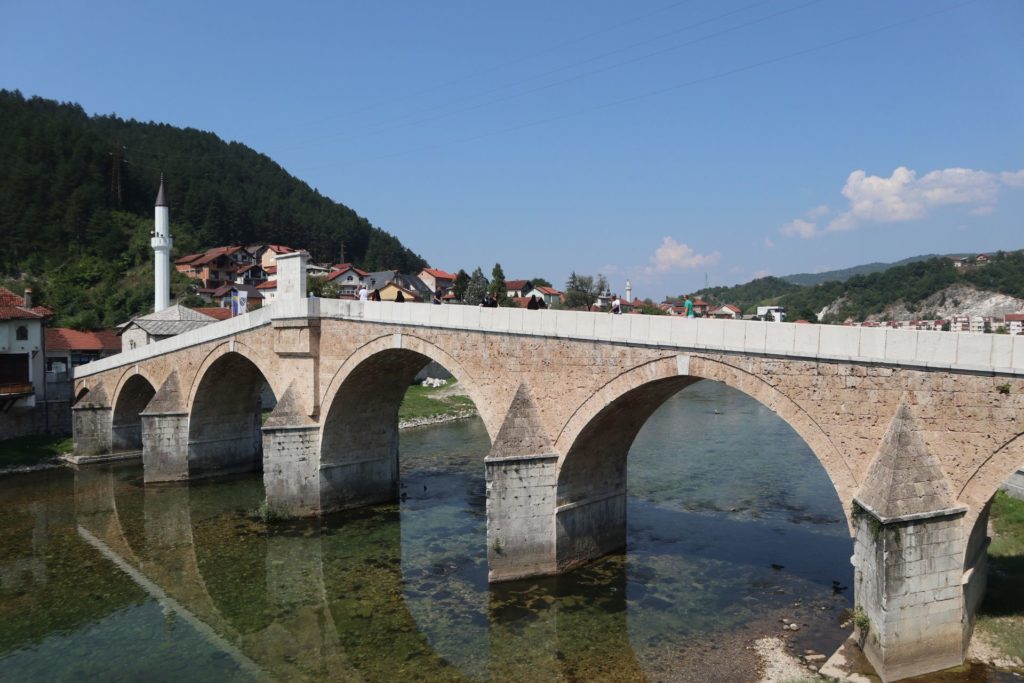
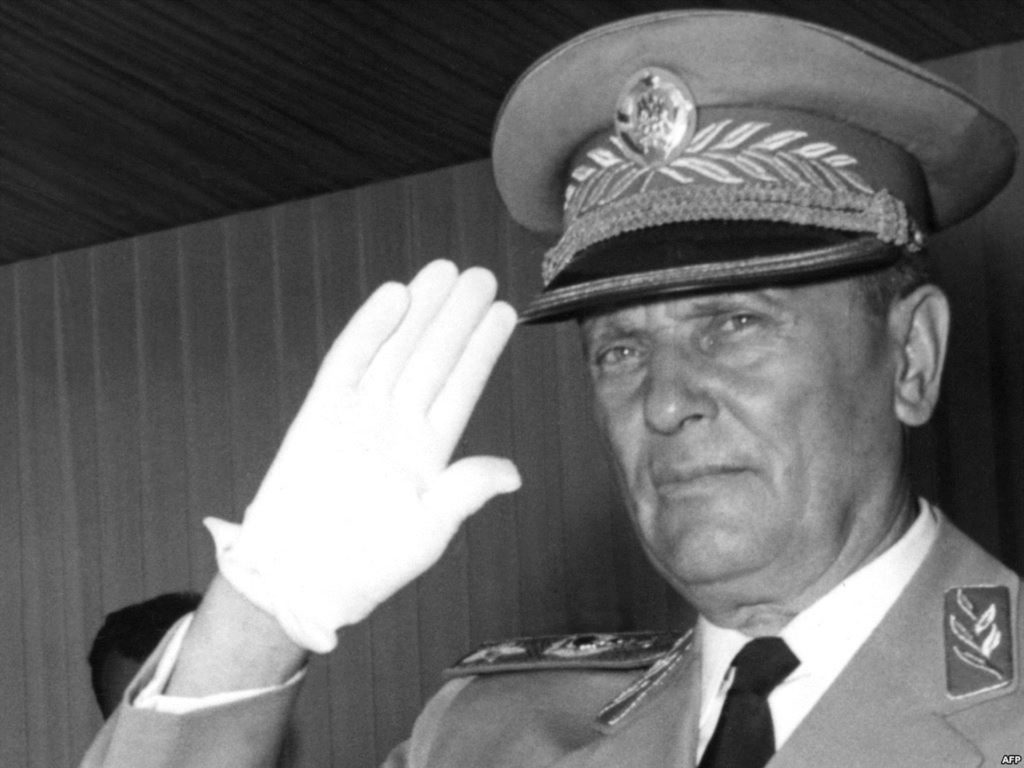
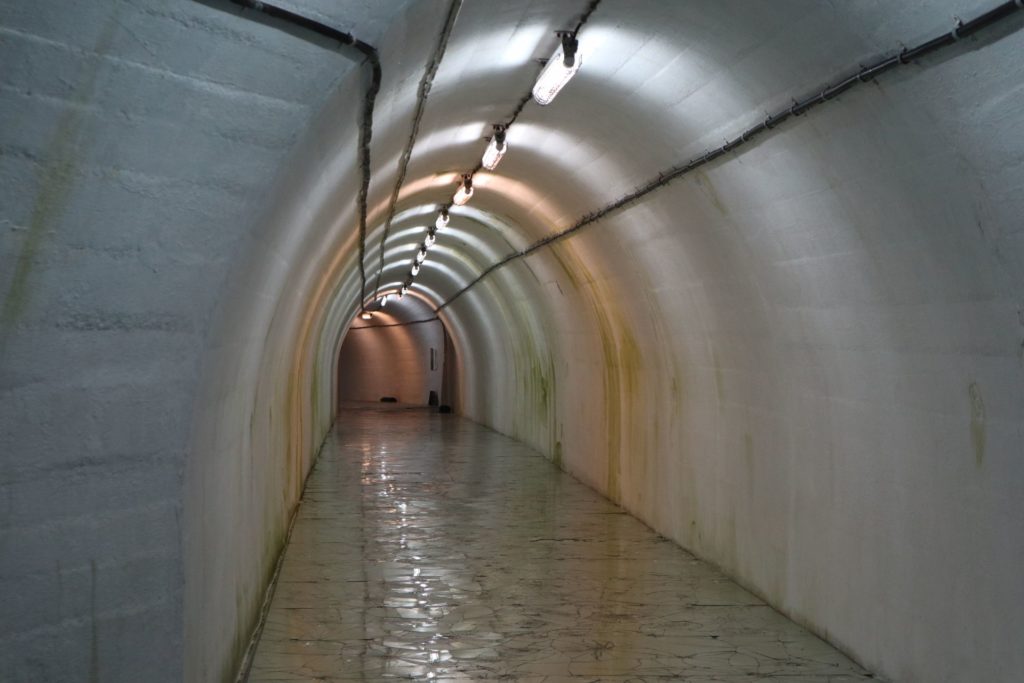
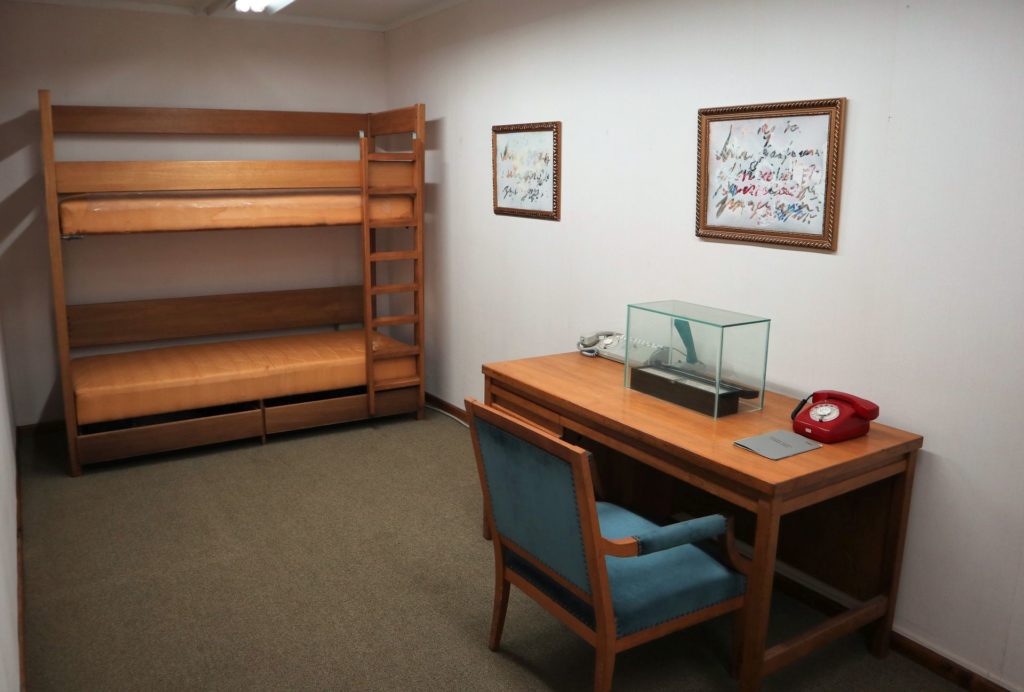
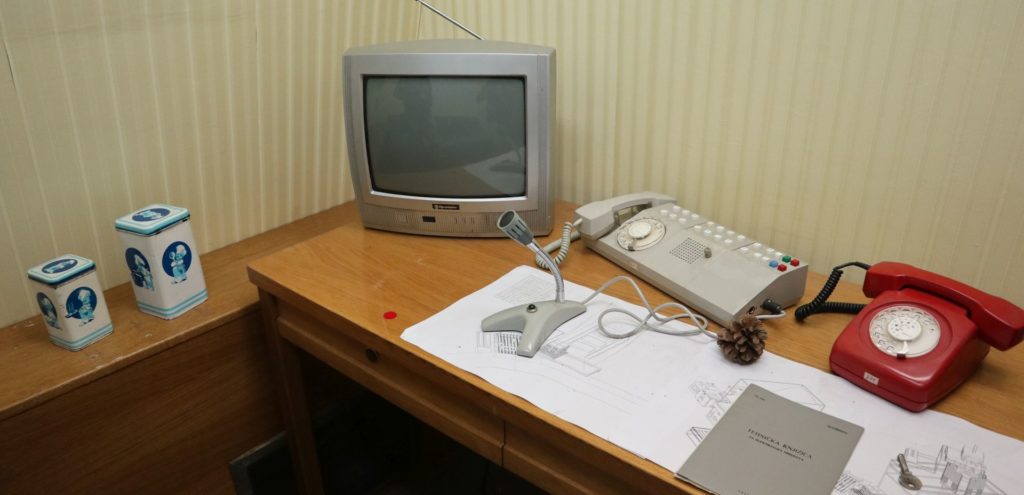
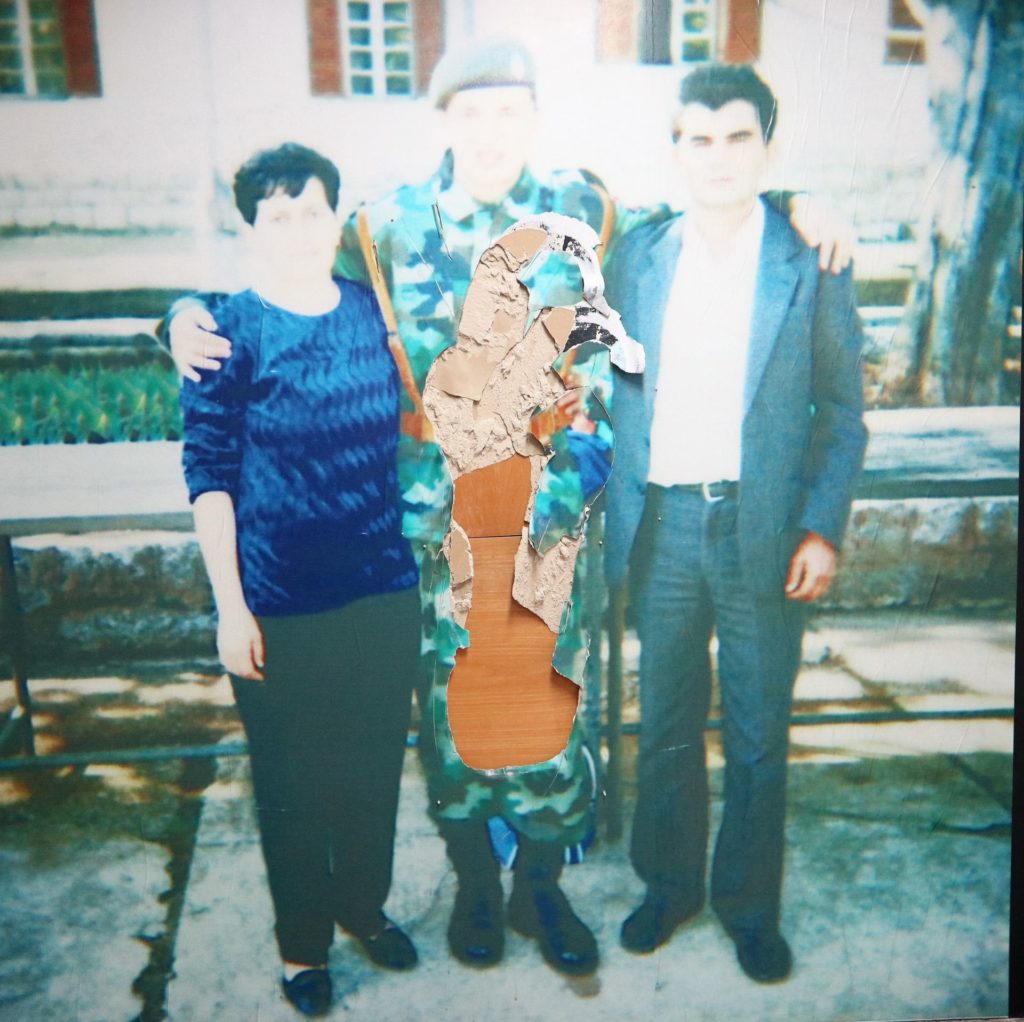
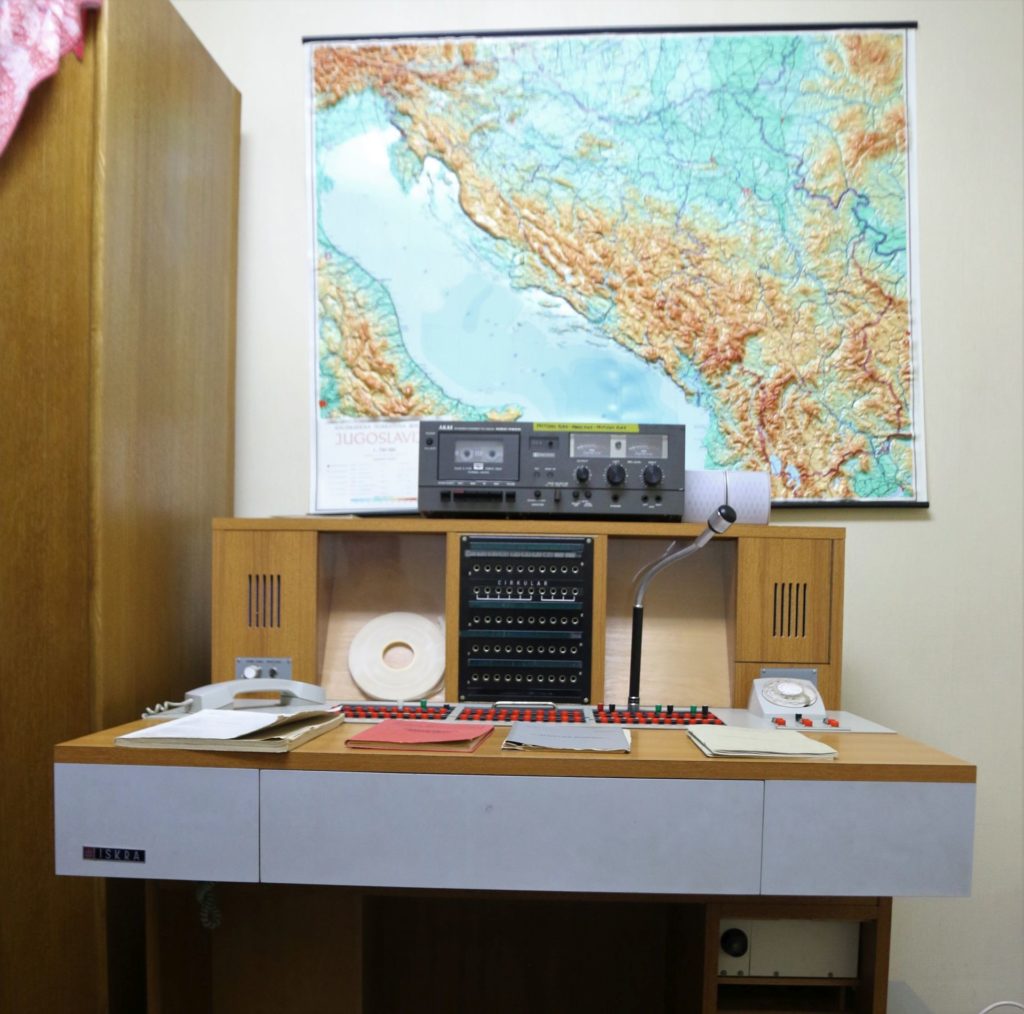
Fascinating article, Marianne. And great pictures too. If Tito went to these lengths, imagine what
Albanian dictator Enver Hoxha’s security arrangements must have been like!!
Love reading your columns, keep them coming.
Ga zo door nicht! Iets voor een volgend bezoek aan Montenegro!
Nice article. I was there several times; always impressive.
Thank you this educational article